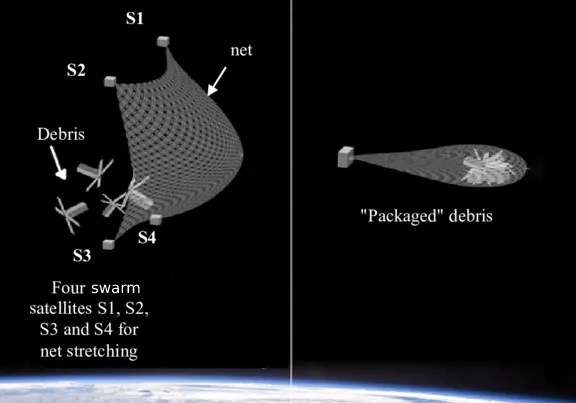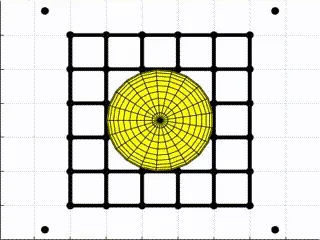The ISRO Internship
Research intern experience at ISRO Satellite Centre working on active space debris removal using tether-net connected satellites
I spent the summer of 2017 as a research intern at the ISRO Satellite Centre, Bangalore.
At the start of my third-year at IIT Kharagpur, I would not have guessed that I would get to work for my country’s national space agency and be able to further ongoing theoretical research on ways to tackle the Kessler syndrome.
In this internship, I designed mathematical models and simulations for physical objects interacting in space.
Contents
How I got selected
Resume
Well, other than being enrolled in an Aerospace Engineering degree at one of the most prominent institutes of the country, the strongest point on my resume was a successful 3-month internship at Team Indus in the summer of 2016. Team Indus is a private for-profit aerospace company that was all geared up at winning the Google Lunar X Prize competition. I had designed some mathematical models and simulations for thruster misalignment estimation during various burn phases, mainly in MATLAB.
Application Process
The application process was tricky. I could not find an “open positions” page online. And if you have ever been to the ISRO website, it’s really hard to find what you’re looking for. No, my best friend here, was networking.
I had heard about the Indian Institute of Space Science and Technology having direct ties with ISRO, and that students usually go for internships at various labs across the entire space agency. Through a bit of googling, I found a list of students who had interned at the ISRO Satellite Centre the previous summer, and through a bit of facebooking, I found one student with a close mutual friend. I soon scheduled a call with her, and she turned out be a really interesting person. We talked about her project which was based on robotics, as well as her university life. She set me up for a call with her mentor, who was also a graduate from her university.
Interview Call
My call with my mentor, Mr Aditya R., basically involved a CV runthrough, an extensive discussion about my work at Team Indus, and a free-talk about my interests and projects at IIT Kharagpur. To my relief, he said he was looking for interns and my resume matched his requirements. More luckily, I got to choose between 2 projects to work on!
The Project
Objectives
The goal of the project was to simulate active space debris removal using tether-net connected to satellites in formation. There were 3 main concepts involved:
1. Spacecraft formation flying: This topic is well explored and enough literature was available. It involved relative position control combined with orbital mechanics.
2. Tether net modelling: The behaviour of the net had to be described as a spatially distributed mechanical system.
3. Contact dynamics: The collective behaviour of the net and the satellites in formation during and after debris contact phases.
Motivation
Among many things, space is also the most dangerous junkyard Earth has created. If you have seen the 2013 film Gravity, the accident that caused the astronauts to break off from the ship was due to the debris in space.

It is estimated that there are 600,000 debris fragments ranging from 1~10 cm, and on average one satellite is destroyed by collision with space junk each year. If satellites are not disposed of properly, the parts could become high-speed bullets leading to a chain reaction of collisions, a theoretical scenario popularly known as the Kessler Syndrome. Apart from dramatic accidents, such a scenario could lead to serious consequences including unusable orbits or communication blackouts.
A number of cleanup efforts have been explored/proposed in recent years - robotic grappling arms, harpoons, deploying nets, electrodynamic tethers, ground-based lasers, etc.
This project combined swarm satellites and tether-nets for Active Space Debris Removal.
Implementation
Simulations for the various components were developed in MATLAB and working code was replicated in C++ for faster experimentation. A C++ library implementation for MATLAB’s matrix/vector manipulation was developed which reduced simulation time by 5 times and allowed easy code porting.
Spacecraft formation flying

Relative orbit dynamics of two objects in close orbits, can be modelled using the Hill-Clohessy-Wiltshire (HCW) equations. These were used to model feedback linearization based proportional-derivative (PD) controller for generating the control commands for the spacecraft, necessary to keep the spacecraft in formation to maintain the required tether-net shape in various phases of the operation.
Continuous torque commands had to be converted to on-off commands to model actuators. This was done using Pulse Width and Pulse Frequency modulation (PWPFM).
Tether net modelling
A lumped parameter approach is used to model the dynamics of the tether-net and the tether-net to spacecraft connectivity.
This simplifies the description of the behaviour of spatially distributed physical systems such as a tether-net, into a topology consisting of discrete entities (nodes) that represent rigid bodies with mass and interactions between rigid bodies as kinematic pairs (joints, springs and dampers).

Result
The results of this research were drafted into a research paper and accepted for Interactive Presentation in the 69th International Astronautical Congress 2018 in Bremen, Germany. However, due to lack of sponsorship and funds, I was not able to attend the conference.
My Experience
As an aerospace engineering student, I was very enthusiastic about working at the ISRO Satellite Centre, and I was very excited to fly to Bangalore as soon as my summer vacation started.
Since I was an “unofficial” intern, I was not given any stipend, and I had to cut my costs by staying at my uncle’s place - about an hour of bus travel each day. But also because of that, I had the benefits of working flexibly in terms of hours and place of work.
My first week at ISAC, my mentor introduced me to the team at the Control Dynamics and Simulation Group, who were mostly graduates from IIST. They were really friendly, and talking to them was like talking to any senior from college. There were 3 more interns from different universities, who had their own stories of how they got their internships.
I usually started work at 10AM and ended work around 4PM. My mentor and I synced up twice each week and discussed work updates every day. It motivated me to stay on track. Since I could be flexible, I sometimes used to work from cafes near my place instead of going to office. My mentor was super approachable, and I could call him up in the middle of the night to discuss a sudden idea I had. I also synced up with the group’s project director, Dr Vinod Kumar, a few times, who told me about his long journey at ISRO.
I enjoyed such 1on1 sessions. They helped me connect with the team better. I also loved the two chai breaks, where employees used to line up for free tea/coffee and free talk. In some of these, my mentor and the other team members used to take us for tours of the Satellite Centre. It was unbelievable seeing the mission control for the recently launched GSAT-9 and GSAT-11 in development, right in front of our eyes!
However, amongst all things shiny, there were things that stood out that I could not help feeling irritated about. Offices were similar to old Indian government offices desperately in need of an upgrade. Some of the PCs we used to work on were still equipped with age-old hardware like CRT monitors. My team’s office was a room divided into cubicles, which my mentor said made him feel claustrophobic at times. I used to see more progress when I was working on my laptop from a cafe than when I was working in a no-window office all day.
I learned a lot talking to my colleagues. The engineers/scientists shared a lot of career insight, which had helped me gear up into changing my career in the coming months. I discussed about some ML projects I worked on in college, and I learned how it was applied in projects at ISRO. Discussions that could not be completed over chai breaks were continued the next day or free pizza treats after work!
